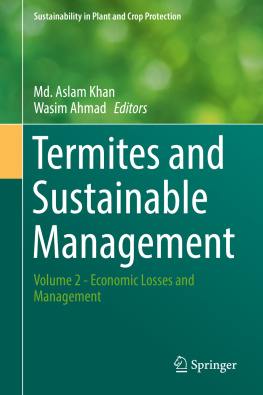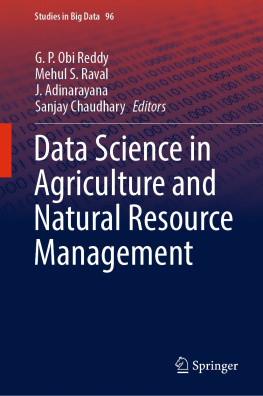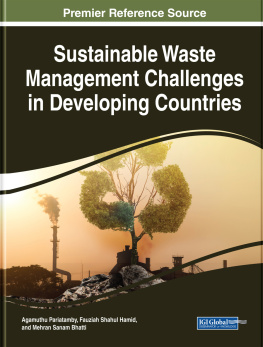Springer International Publishing AG 2018
Md. Aslam Khan and Wasim Ahmad (eds.) Termites and Sustainable Management Sustainability in Plant and Crop Protection
1. The Fungus-Growing Termites: Biology, Damage on Tropical Crops and Specific Management
Abstract
Termites have a significant ecological role in natural, tropical ecosystems. However, some species (around 10%) have potential to become pests in agricultural systems. In particular, some species from the family Macrotermitinae, also known as fungus-growing termites, are described as significant crop pests. Widely present in Africa and Asia but absent from the other continents, these termites are featured by an original digestive symbiosis with a basidiomycete fungus belonging to the genus Termitomyces. This specific fungus allows a fast and efficient digestion of plant material by the host. Consequently, these termites have a great ability to adapt to various food sources, making them a potentially harmful group during the introduction of new crops. Despite the economic impact of these crop pests, there is to date no method for rapid and specific management of these insects. The existing control strategies have weak efficiency and require excessive amounts of chemicals. Generally, these techniques consist of repeated spraying of pesticides on the floor, leading to a more or less massive destruction of nontarget species and a gradual deterioration of the environment. More specific control methods have been tested as alternatives and have clearly shown better efficiency, compared to conventional methods. These are mainly based on baits treated with attractants (pheromones) or on growth inhibitors specifically targeting the fungal symbiont. This chapter provides a review of the biology of fungus-growing termites, focusing on their specific nutrition mode, and presents the most recent methodology used for their management.
1.1 Introduction
1.1.1 Biology and Taxonomy of Fungus-Growing Termites
Fungus-growing termites constitute the subfamily of Macrotermitinae, belonging to the Termitidae family, known as flagellate-free termites (Eggleton ).
Besides the adverse effects that some fungus-growing species can have on some human activities, Macrotermitinae are acknowledged to play a crucial ecological role in their natural environment. They play a significant role in organic matter cycling and soil structuration (Wood and Sands ).
Fungus-growing termites are exclusively present in Tropical Africa (including in Madagascar) and in Indo-Malayan and Arabic areas of Asia. The diversity of fungus-growing termites is estimated to around 330 species, affiliated to 12 genera. The number of genera could be slightly lower since phylogenetic analyses have revealed that the genus Hypotermes , which was thought to be endemic in Asia, nested within the genus Odontotermes (Aanen et al. ).
1.1.2 Nest Construction
As for other social insects living in densely populated colonies, termites have to face various constraints, including the maintenance of thermo-hygrometric conditions and gas exchanges in a range compatible with their biology. They overcome these constraints largely thanks to their nest structure. Of all the termites, and probably of all nonhuman animals, structures built by Macrotermitinae are of the most complex and the most impressive in nature (Eggleton ).
Subterranean Nests
These are entirely hypogeal nests consisting in many diffuse chambers containing fungus combs and disposed either parallel to the soil surface or at different depths. These chambers communicate between them and with the royal cell by a dense network of galleries. For few species, a more or less significant part of the nest can be perceptible above the ground level. This is the case of nests of genera such as Microtermes , Ancistrotermes , Acanthotermes , and many species of Odontotermes.
Epigeal Nests
They emerge from a relatively common subterranean stage made of a single chamber containing the primary fungus comb and the colony population and bounded by a spherical inner wall. This chamber and the wall then gradually expand as the size of the nest increases and are surrounded by a huge empty space (without brood) which may limit the access of predators. When the nest emerges above soil surface, the continuation of the nest growth can follow two distinct developmental models: (1) either the single chamber extends laterally, which results in a suppression of the empty surrounding space and gives rise to a more diffuse internal part of the nest, as is the case of M. subhyalinus in West African savannahs and M. falciger , or (2) this chamber remains isolated and is open outside the nest by a chimney system. Mounds of species such as M. jeanneli and O. transvaalensis (Ruelle ).
1.1.3 Social Organization
As in most of the Termitidae subfamilies, a colony population of Macrotermitinae is made on three main castes, the sexual line, soldiers, and workers, supplemented with juvenile stages (eggs, larvae, nymphs, pre-soldiers). However, this simplified structure conceals further subdivisions of castes in morphs performing different roles in the colony functioning.
The Sexual Line
This is represented by the royal pair, the king and the queen, originating from nymphs. Nymphs already differ from larvae by the second instar, though the presence of wing pads (Grasse ). From a biological point of view, the nonexistence of ergatoids in Macrotermitinae contrasts with the high-energy investment made for the construction of these highly structured colonies.
The Worker Caste
This caste is polymorph in fungus-growing termites, consisting in two morphs: the major workers, which are males deriving from the larvae of the third instar, and the minor workers, which are females derived from the third instar of the small larvae (Mensa-Bonsu ) and may be universal within the subfamily.
The Soldier Caste
This is certainly the most variable caste with regard to the origin (including the sex) and the number of morphs, as compared to the other castes. The presence of two distinct soldier morphs, all of which are females derived from the third instar of small larvae (minor soldiers) or from the small workers of the first stage (major soldiers), is the most common case in fungus-growing termites ( Macrotermes , Ancistrotermes , Pseudacanthotermes ) (Noirot ).
1.1.4 Colony Odors and Nestmate Recognition
For a long time, the chemical communication in termites has been considered less important as compared to Hymenoptera such as bees and ants. However, this idea may have been skewed by a smaller number of investigations regarding this aspect of the termite biology. The bulk of interactions governing the social life within a colony is controlled by chemical signals. These signals are involved in reproduction (sexual pheromones), colony defense (alarm, defense, and aggregation signals), and nestmate and intercolonial recognition and forage (trail-following and recruitment pheromones) (Bordereau and Pasteels ).









